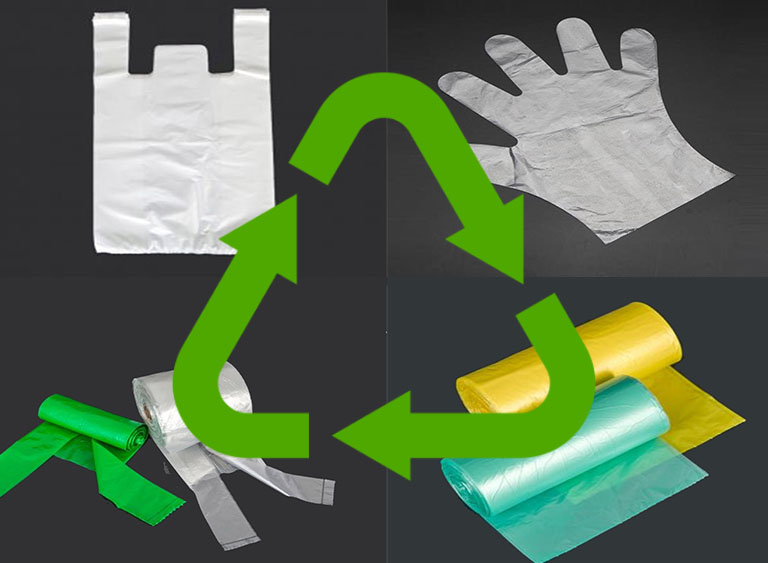Understanding PE Plastic
Polyethylene (PE) is a widely-used polymer in the plastic industry, known for its flexibility, durability, and versatility. PE plastic is used in a variety of applications, from packaging to construction materials. It is also one of the most recyclable plastics available today.
In this guide, we’ll cover the basics of PE plastic, its applications, and the importance of recycling it.
The Types of PE Plastic
PE plastic comes in different types, each with its own properties and applications. Here are the most common types of PE plastic:
High-Density Polyethylene (HDPE) – This type of PE plastic is known for its high strength-to-density ratio, making it ideal for packaging, pipes, and construction materials.
Low-Density Polyethylene (LDPE) – LDPE is a more flexible and lightweight type of PE plastic, commonly used in bags, wraps, and films.
Linear Low-Density Polyethylene (LLDPE) – LLDPE is a more flexible and stretchable type of PE plastic, ideal for use in stretch films, bags, and wraps.
Medium-Density Polyethylene (MDPE) – MDPE is a type of PE plastic that combines the properties of HDPE and LDPE. It is commonly used in gas and water pipes.
Applications of PE Plastic
PE plastic is used in a variety of applications, thanks to its versatility and durability. Here are some of the most common applications of PE plastic:
Packaging – PE plastic is widely used in packaging, from food containers to shopping bags and shrink wraps.
Construction – HDPE is commonly used in construction materials, such as pipes, geomembranes, and insulation.
Agriculture – PE plastic is used in agricultural applications, such as greenhouse films, mulch films, and irrigation pipes.
Automotive – PE plastic is used in automotive applications, such as fuel tanks, pipes, and cable insulation.
Medical – LDPE is commonly used in medical applications, such as disposable syringes and medical bags.
The Importance of Recycling PE Plastic
PE plastic is one of the most recyclable plastics available today, and recycling it is crucial for reducing plastic waste and promoting sustainability. Here are some reasons why recycling PE plastic is important:
Environmental impact – PE plastic waste is a significant contributor to environmental pollution. Recycling PE plastic can reduce the amount of waste that ends up in landfills, oceans, and other ecosystems.
Resource conservation – Recycling PE plastic conserves natural resources, such as oil and gas, which are used to produce plastic.
Energy conservation – Recycling PE plastic uses less energy than producing new plastic from raw materials, which reduces greenhouse gas emissions and helps mitigate climate change.
PE Plastic Recycling Methods
PE plastic can be recycled using different methods, depending on the type and quality of the plastic waste. Here are some common PE plastic recycling methods:
Mechanical recycling – This method involves shredding and melting PE plastic waste, then reforming it into new products. Mechanical recycling is the most common method of PE plastic recycling.
Chemical recycling – Chemical recycling involves breaking down the molecular structure of PE plastic waste into its constituent monomers or other chemicals, which can be used to produce new plastic.
Feedstock recycling – Feedstock recycling involves converting PE plastic waste into fuel or energy through pyrolysis or gasification.
The Future of PE Plastic
PE plastic is likely to remain a widely-used plastic for the foreseeable future, thanks to its versatility and durability. However, the future of PE plastic is also dependent on its sustainability and recyclability. As consumers and industries become more aware of the environmental impact of plastic waste, there is an increasing demand for more sustainable solutions.
In response to this demand, innovations in PE plastic production and recycling are being developed. For example, biodegradable and compostable PE plastic alternatives are being researched and tested. These materials have the potential to reduce plastic waste and increase the sustainability of the plastic industry.
Conclusion
PE plastic is a versatile and durable polymer that is widely used in various applications. Its recyclability makes it an important material for promoting sustainability and reducing plastic waste. Understanding the different types of PE plastic and their applications is crucial for making informed decisions about its use and disposal.
Recycling methods such as mechanical, chemical, and feedstock recycling can be used to recycle PE plastic waste. Innovations in the plastic industry, such as biodegradable and compostable alternatives, are being developed to promote sustainability and reduce plastic waste.
As consumers and industries become more aware of the environmental impact of plastic waste, it is crucial to continue developing sustainable solutions and promoting responsible plastic use and disposal.

